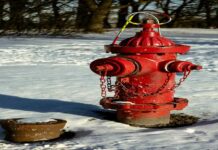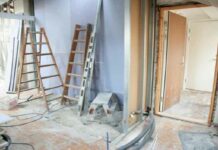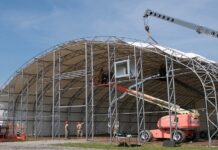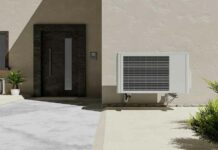When winter arrives in Canada, it’s more than just snow-covered landscapes and freezing temperatures it’s a test of infrastructure. From burst pipes to frozen drains, winter reveals the strength or weakness of a building’s plumbing system. For construction professionals working in colder climates, designing resilient plumbing systems is not just an option; it’s a necessity.
Canadian plumbers have long been on the front lines of winter plumbing challenges. Their experience offers critical lessons in how to design systems that don’t just survive the winter—but thrive in it.
Understanding the Winter Plumbing Challenge
In sub-zero temperatures, water within poorly insulated or exposed pipes can freeze. As the water freezes, it expands, increasing pressure within the pipe until it cracks or bursts. This can lead to significant water damage, expensive repairs, and long-term structural problems.
Beyond frozen pipes, winter also complicates drain systems. When ice and snow begin to melt and refreeze, it can result in a drain clog, especially in exterior systems like sump pump discharge lines or roof drains.
In short, winter doesn’t forgive poor planning. That’s why proactive design—and experienced plumbers—are key.
1. Pipe Placement and Insulation: The First Line of Defense
One of the most fundamental considerations when designing a winter-ready plumbing system is pipe placement. Pipes running through unheated or exterior spaces like garages, attics, and exterior walls are most vulnerable to freezing.
To reduce risk, Canadian plumbers often advise:
- Running pipes through interior walls or conditioned spaces wherever possible.
- Avoid placement near windows, vents, or poorly sealed doors.
- Using high-quality insulation sleeves or wraps around pipes in exposed areas.
Insulating not just the pipe but the surrounding cavity helps maintain warmth and reduce the chance of freeze-ups.
2. Frost-proof Hose Bibs and Outdoor Plumbing Fixtures
Exterior hose bibs and outdoor faucets are frequent culprits in winter plumbing failures. If not properly drained or frost-proofed, these fixtures can freeze and rupture—even if the interior valve is shut off.
Modern solutions include:
- Installing frost-proof hose bibs that shut off water flow inside the building envelope.
- Incorporating backflow preventers to avoid contamination from frozen or ruptured lines.
- Sloping lines slightly downward toward the exterior to encourage drainage when shut off.
John The Plumber, a respected Canadian plumbing company, consistently recommends replacing traditional hose bibs with frost-free models before winter sets in.
3. Heat Trace Cables and Heated Drain Lines
For pipes that cannot be relocated or fully insulated, heat trace cables provide a practical solution. These cables run along the pipe and automatically heat when temperatures drop, preventing freezing.
They are particularly useful for:
- Crawlspace plumbing
- Exterior sump pump discharge lines
- Roof drainpipes that experience frequent freezing
Proper installation requires knowledge of voltage, thermostat settings, and circuit protection, which is why this task is best handled by professional plumbers familiar with local code and climate requirements.
4. Vent Stack and Drain Line Considerations
Vent stacks are critical for maintaining air pressure in the drainage system. However, in freezing temperatures, moisture inside the vent can form ice and block airflow. This can lead to slow drainage, foul odours, or even a drain clog in extreme cases.
Design solutions include:
- Using larger-diameter vent stacks to reduce freezing risk.
- Installing vent caps that minimize snow or ice accumulation.
- Ensuring the vent termination is well above the snow line on the roof.
Proper venting is one of the more overlooked components in winter plumbing design, yet it plays a pivotal role in maintaining a functional drainage system throughout the season.
5. Septic Systems and Winter Load Planning
In rural areas or regions without municipal sewer access, septic systems must also be considered. Freezing temperatures can disrupt the entire system if not properly protected.
Best practices include:
- Burying lines deep enough to remain below the frost line.
- Avoiding snow compaction or heavy vehicle traffic over septic fields.
- Using insulated risers on septic tank lids to allow winter servicing without exposing the system to the cold.
For any septic system in a cold climate, it’s essential to work with plumbers who understand seasonal variations and loading cycles.
6. The Importance of Code Compliance and Local Expertise
Building codes across Canada account for climate zones, frost depths, and regional construction standards. While adhering to these codes is mandatory, going above and beyond minimum requirements is where real winter protection lies.
This is where seasoned professionals like those at John The Plumber shine. With deep knowledge of local conditions, they design and install plumbing systems that aren’t just compliant—but long-lasting.
7. Proactive Maintenance: A Key Component of Design
Even the best plumbing system can fail without regular maintenance. That’s why smart design includes ease of access for service and inspection.
Features like:
- Accessible shut-off valves
- Drain-down points for outdoor lines
- Clean-outs and camera access for drain systems
All contribute to long-term resilience.
Maintenance tasks such as draining hose bibs, inspecting insulation, and checking sump pump discharge lines can prevent winter disasters and save thousands in repairs.
Conclusion: Winter-Proofing Starts with Smart Design
The extreme cold of Canadian winters presents unique plumbing challenges that demand thoughtful, experience-driven solutions. Prioritizing pipe placement, insulation, heat tracing, and proper venting—and working with knowledgeable plumbers—builders and homeowners can drastically reduce the risk of winter plumbing failures.
With years of experience navigating frigid temperatures, companies like John The Plumber bring invaluable insight to the table. Their proactive approach ensures that whether it’s a new build or a retrofit, your plumbing system is designed to weather the worst that winter has to offer.




























